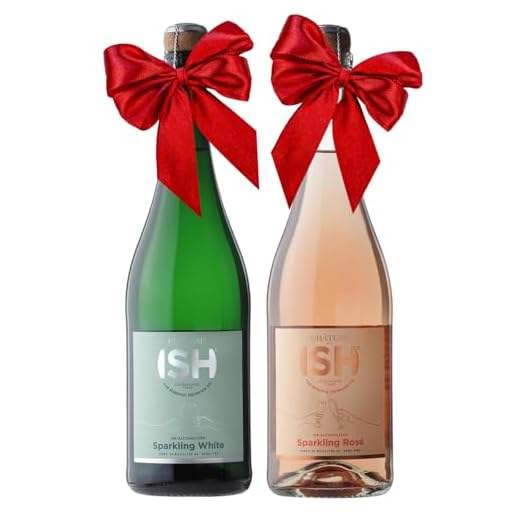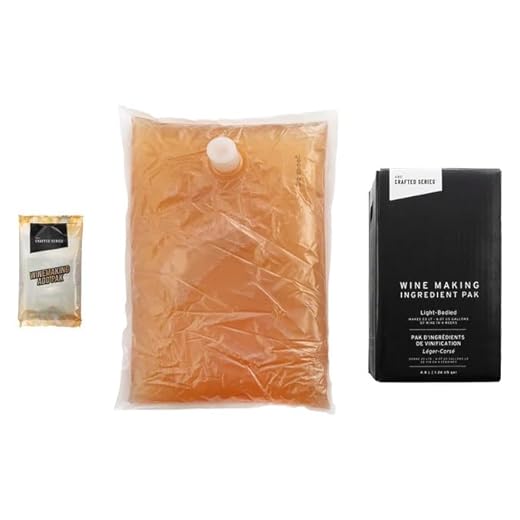



For those mindful of their dietary intake, the difference in energy content between these two popular choices may surprise you. Generally, a standard serving of the lighter option contains approximately 120 calories, while the more robust selection averages around 125 calories. This slight variation can influence your decision based on your personal health goals.
If you’re tracking your consumption closely, consider that factors such as alcohol content and residual sugars can affect these numbers. The former typically contributes to a higher caloric count, while the latter can vary significantly between brands and styles. A sweeter option might push the caloric content upwards, so always check the label for specifics.
When choosing for a meal pairing, the heartier variety often complements richer dishes better, while the lighter selection pairs well with seafood and salads. In this context, the choice may come down to flavor profiles and personal preferences rather than just the energy content.
Caloric Comparison of Different Varietals
For those monitoring their intake, knowing the energy content of these beverages is crucial. Generally, the average serving of 5 ounces of a particular type contains between 120 to 130 units of energy. However, this can vary based on the specific varietal, production methods, and residual sugars present.
Factors Influencing Energy Content
Several key elements affect the energy count in these beverages:
- Sugar Levels: Higher sugar concentrations directly increase energy content.
- Alcohol Concentration: A higher alcohol percentage contributes to a greater energy count.
- Serving Size: Larger servings naturally provide more energy.
Energy Content Table
| Type | Average Energy (per 5 oz) |
|---|---|
| Light Varietal | 120 |
| Full-Bodied Varietal | 130 |
| Sweet Varietal | 140 |
For a balanced choice, I suggest opting for lighter options if energy intake is a priority, while fuller-bodied selections can be enjoyed on occasions where indulgence is desired. Understanding these distinctions not only aids in making informed decisions but also enhances the overall experience with food pairings and enjoyment.
Caloric Content of White Wine
On average, a standard 5-ounce serving of a typical bottle contains around 120 to 130 units of energy. Factors influencing this include sugar content and alcohol levels. Depending on the varietal, some options may be lighter, while others can be richer in energy.
Key Factors Affecting Energy Levels
The sweetness of the beverage plays a significant role in determining its energy density. A sweeter beverage, like a late harvest variety, tends to contain higher sugar levels, thus contributing to increased energy content. Conversely, dry options usually have lower sugar, resulting in lesser energy.
Choosing Wisely
When selecting a bottle, consider looking for drier selections if aiming for lower energy intake. Labels often provide information on residual sugar content, guiding your decisions effectively. Always remember to balance your choices with food pairings to enhance the overall experience while being conscious of your energy consumption.
Caloric Content of Red Varietals
Typically, a standard serving of this deep-hued beverage contains around 125 to 150 units of energy. Factors influencing this measurement include alcohol concentration, residual sugars, and the specific grape variety used in production.
To better understand the energy profile, consider the following aspects:
- Alcohol Level: Higher alcohol content generally correlates with increased energy values. Many selections range between 12% to 15% alcohol by volume (ABV).
- Residual Sugar: The amount of sugar left after fermentation can significantly impact the total energy. Some options may include sweet notes, while others are more dry.
- Serving Size: A standard pour is typically 5 ounces; however, larger servings will proportionally increase energy intake.
When pairing, consider that dishes with robust flavors, such as grilled meats or rich sauces, complement darker varietals exceptionally well. This pairing can enhance the tasting experience, making it a delightful choice for meals.
For those monitoring their intake, opting for drier selections will often yield a lower energy count. Familiarize yourself with different varietal profiles to make informed choices that align with your preferences and dietary goals.
Factors Affecting Wine Caloric Values
Alcohol content significantly influences energy density. Higher alcohol percentages lead to increased energy values. Typically, a 12% ABV (alcohol by volume) beverage will contain fewer calories compared to one with 14% ABV, all else being equal.
Residual sugars also play a key role. Varietals with elevated sugar levels contribute additional energy. For example, a dessert variety will generally contain higher energy levels due to unfermented sugars, compared to its drier counterparts.
Vineyard practices impact the grape’s characteristics. Grapes grown in warmer climates often develop increased sugars, affecting the final product’s energy content. Choosing grapes from cooler regions usually results in lower energy values.
Fermentation methods can alter the final product. Techniques that retain more residual sugar will yield a sweeter, higher-energy beverage, while complete fermentation results in a drier, lower-energy option.
Serving size matters. A larger pour naturally increases the total energy consumed. Opting for smaller servings can help manage overall energy intake, particularly during meals or social occasions.
Food pairings can also affect perception. While enjoying a meal, the combination of flavors may lead to a different experience, making the energy content less noticeable. Understanding how food interacts with beverages can enhance enjoyment while being mindful of energy consumption.
Comparative Analysis of White and Red Wine Calories
For those monitoring their energy intake, understanding the nutritional aspects of various grape beverages is crucial. On average, a 5-ounce serving of a typical light-bodied option contains around 120 to 130 units, while a similar serving of a heavier variant yields approximately 125 to 150 units. This slight difference can influence choices when selecting a drink for a meal or social gathering.
Light-bodied selections, often associated with crisp and refreshing notes, typically present lower numbers, making them suitable for casual sipping. In contrast, fuller-bodied varieties can often be richer, leading to a higher energy count. This is particularly relevant for individuals who enjoy richer flavors or are pairing with hearty dishes.
When considering these beverages, it’s essential to factor in the serving size and style. For example, sparkling versions usually offer lower energy counts compared to their still counterparts due to differences in residual sugars and alcohol content. Conversely, certain dessert styles can significantly elevate the energy count, making them a less favorable choice for those mindful of their intake.
Understanding the nuances of these beverages allows for informed decisions that align with dietary goals while enhancing the dining experience. Whether savoring a light option or indulging in a bolder flavor, knowledge of their nutritional content can lead to a more enjoyable and responsible consumption experience.
Best Practices for Calorie-Conscious Wine Choices
Opt for lighter selections, such as those labeled as “dry” or “crisp.” These tend to possess lower sugar content, translating into fewer energy units. Always check the alcohol level; varieties with lower alcohol percentages generally contain reduced energy content as well.
Serving Size Matters
Stick to standard serving sizes of approximately 5 ounces. Overpouring can quickly elevate energy intake. Consider using smaller glasses to help manage portions visually and psychologically.
Selecting Food Pairings
Pair beverages with lighter fare, such as salads or seafood, which can enhance flavor profiles without significantly increasing energy intake. Avoid high-calorie appetizers that could negate your mindful choices.
Be wary of sweetened cocktails or those with added mixers. These can dramatically increase energy content. Stick to simple pairings that allow the drink’s natural flavors to shine through.
Familiarize yourself with brands known for producing lighter options. Many producers are now focusing on lower-energy alternatives, making it easier to indulge without guilt.
Lastly, savor each sip. Enjoying your drink slowly not only enhances the experience but also helps in regulating intake, allowing for a more satisfying and mindful consumption.
Common Misconceptions About Beverage Calories
People often underestimate the impact of serving size on the energy content of their favorite beverages. A common belief is that all types of drinks carry similar nutritional values, which is far from reality. Understanding the nuances of each option can significantly influence your choices.
Another myth is the assumption that sweeter varieties automatically contain higher energy levels. While sweetness can indicate a higher residual sugar content, it doesn’t always correlate with increased energy values. For example, a dry option can sometimes surprise you with its caloric density.
Alcohol Content and Its Role
Many overlook the direct relationship between alcohol concentration and energy. Higher alcohol percentages typically result in greater energy content, regardless of the type of beverage. This is crucial when selecting options for an evening out. A beverage with a robust alcohol level could pack a punch in terms of energy, even if it appears lighter in color or sweetness.
Finally, the belief that choosing a lighter-colored drink is always a healthier option can lead to misguided choices. It’s essential to consider the full profile of each option, including sugar levels, alcohol content, and serving size. Always be mindful of these factors to make informed decisions when selecting your next drink.
For those keen on capturing life’s moments while enjoying these beverages, consider investing in the best compact digital camera with zoom lens to document your experiences without compromise.








